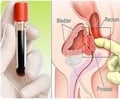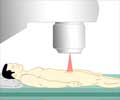Active surveillance is an approach to manage low and low-intermediate risk prostate cancer, which is designed to reduce harm from unnecessary treatment.

TOP INSIGHT
Metastatic disease develops by 7 years in about 3% of men on active surveillance for prostate cancer.
Investigators at the Sunnybrook Health Sciences Centre, University of Toronto initiated a prospective cohort study in 1995 to assess the risk factors for metastases in patients on active surveillance. "This is a detailed analysis of thirty patients initially treated with surveillance for what was thought to be favorable disease, but which eventually progressed to metastatic disease," explained Laurence Klotz, MD, FRCS(C), Professor of Surgery at the University of Toronto. "We previously reported on five such patients. The current report represents a considerably larger group with longer follow-up, which presented an opportunity for risk analysis."
Of the 980 patients analyzed, 211 (21.5%) were classified as intermediate risk, 109 (11.1%) had baseline PSA greater than 10 ng/ml and 133 (13.6%) had GS 7 disease. The investigators analyzed the clinical and pathological correlates of surveillance in patients who eventually experienced metastasis. The median follow-up was 6.3 years (range 0.2 to 20.2).
The researchers confirmed that active surveillance appears safe in patients at low risk and in select patients at intermediate risk, particularly those with GS 6 and PSA greater than 10 ng/ml. Metastasis developed in three percent (30 of 980) of patients. Of the 980 patients, 211 were classified at intermediate risk. Fifteen died of prostate cancer and four died of another cause while 11 were living with metastases at the close of the study. Metastases developed in bone in 18 patients (60%) and in lymph nodes in 13 (43%). The risk of metastasis increased to ten percent (13 of 133) in patients with GS 7 disease.
Patients with elements of Gleason pattern 4 on diagnostic biopsy were at increased risk for eventual metastasis when treated with an initial conservative approach. "The presence of Gleason pattern 4 on diagnostic biopsy conferred a threefold to fourfold increased risk of metastatic disease," noted Dr. Klotz. "Such patients should be offered surveillance with caution. Further evaluation with magnetic resonance imaging and/ or genetic biomarkers should be strongly encouraged if surveillance is elected as an option in these patients."
"The reported rate of three percent is a best case scenario and it is likely that many more men have metastatic disease," observed Joel B. Nelson, MD, Professor and Chairman of the Department of Urology at the University of Pittsburgh Medical Center. "Active surveillance is obviously safe in men who do not progress. The task now is to avoid misclassification of disease as indolent when it is not and detect progression before it is too late."
Source-Eurekalert
 MEDINDIA
MEDINDIA


![Prostate Specific Antigen [PSA] & Prostate Cancer Diagnosis Prostate Specific Antigen [PSA] & Prostate Cancer Diagnosis](https://images.medindia.net/patientinfo/120_100/prostate-specific-antigen.jpg)
 Email
Email










